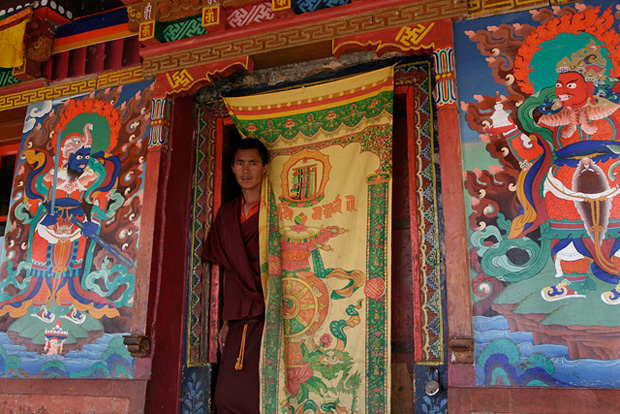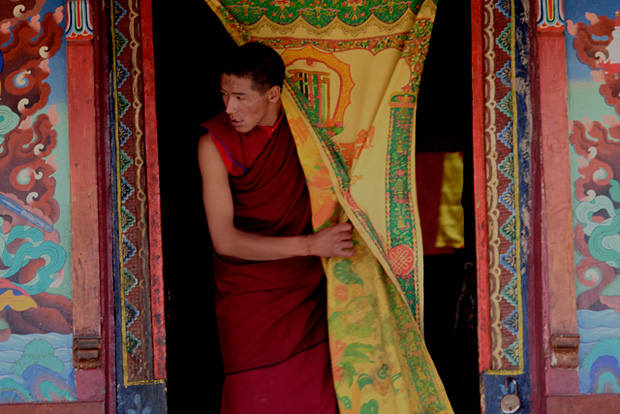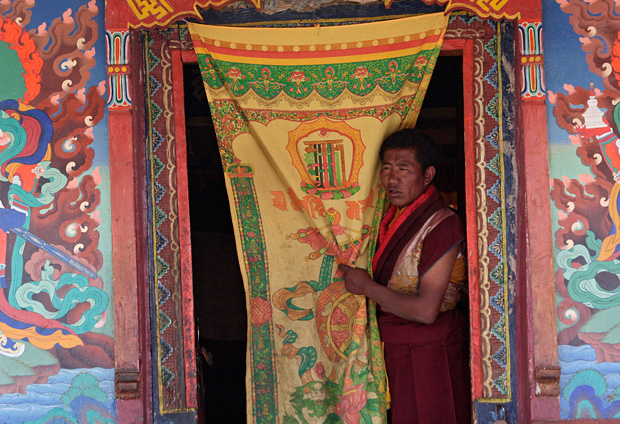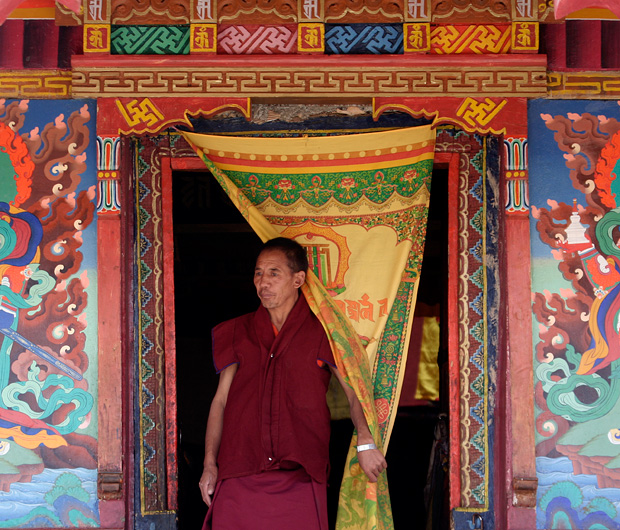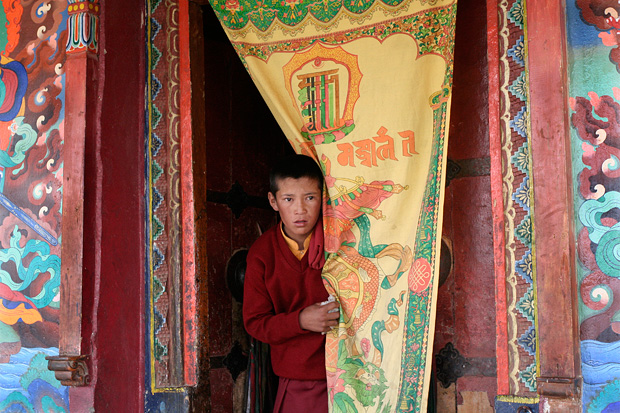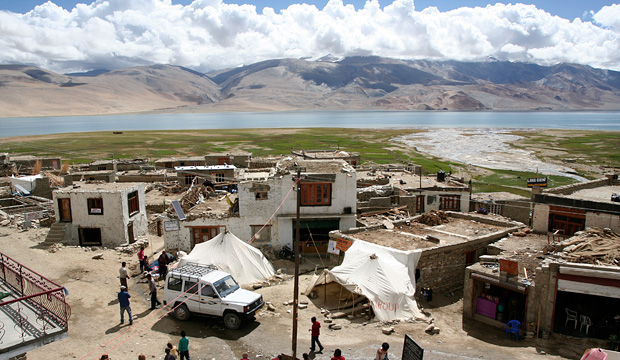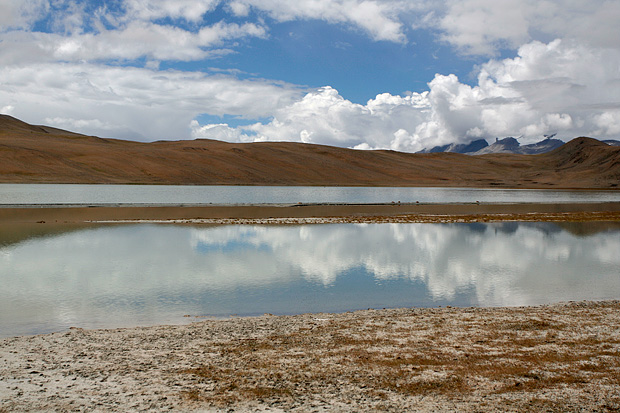Korzok Gustor Festival – Ladakh
On the morning of July 4th, there was a visible excitement outside Korzok Monastery. People moved back forth in anticipation of an exciting day. The place was full of people who had come from pastures located near the village. Women moved around in excitement, wearing best of their traditional attire and jewelry and excitedly talking to old friends whom they were meeting after a long time. The lamas walked back and forth or worked on the last touches for the festival day. Some were getting the costumes out, some were preparing the masks and a few were taking out the musical instruments. It promised to be an exciting day.
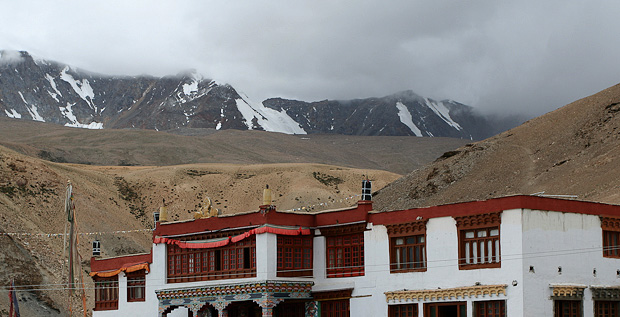
Korzok Monastery and the mountain slopes of changthang
It was the day of Korzok Gustor Festival at the most popular monastery in Changthang region. The monastery’s affiliation was not limited to Korzok Village alone but extended to many changspa nomadic groups who wandered the plateau looking for grasslands to feed their animals. It was a day when most of these nomads would come together to witness the celebrations.
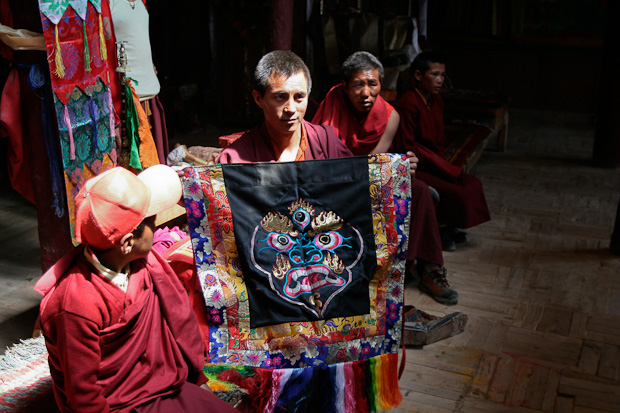
Getting ready..
The festival perhaps begins early in the morning as lamas perform long rituals in the prayer hall. I had been hoping to catch these rituals but despite asking many people including a few lamas, it seemed impossible to get the schedule of activities during the two-day festival. I would get a different answer each time I asked someone, and worse, I would get different answers when we asked the same person second time. What was left for us was to hang out at the monastery the whole day and hope not to miss anything.
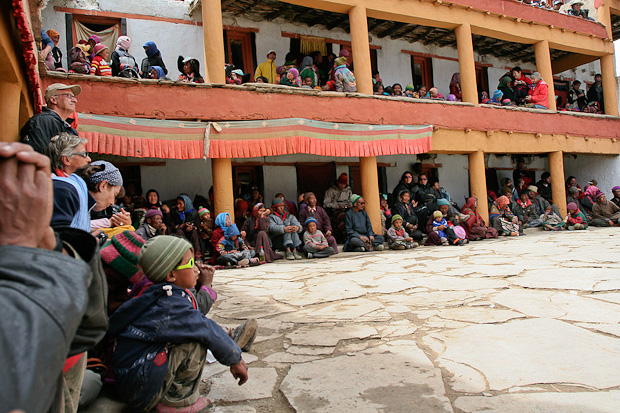
watching the performance
We did miss the prayers but not the cham-dances, the most attended and perhaps the most important part of the two day festival. The whole village and the nomad population squeezes itself to the tennis-court sized courtyard to watch the lamas dance. In the past decade or so, addition of an equal number of tourists coming in to witness the show meant you had to arrive really early to look for a good place to watch the happenings without any obstructions.
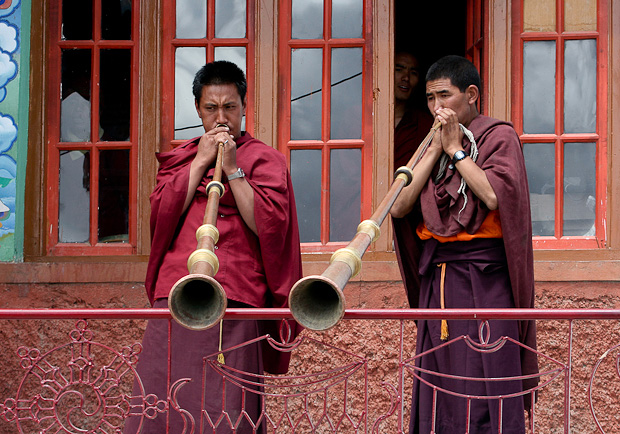
Dung chen, the long trumpets
The festival began with a sudden eruption of sound from dung-chens (very long trumpets) as the head lama walked into the courtyard and conducted a short ritual. Lamas came out one after the other and performed the slow cham-dances synchronized to the sound of drilbu (bells) and nga (drums).
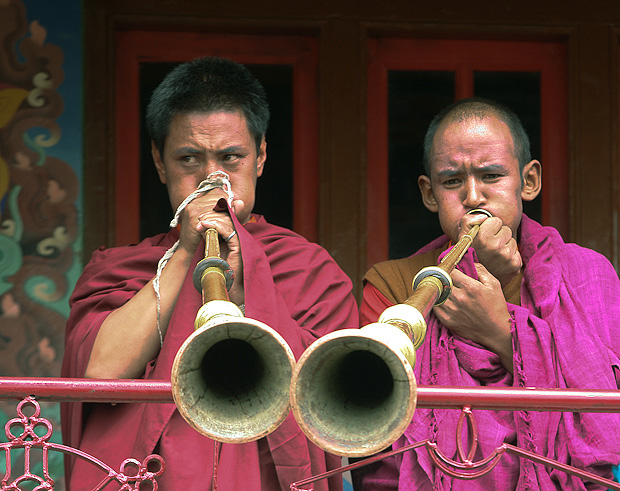
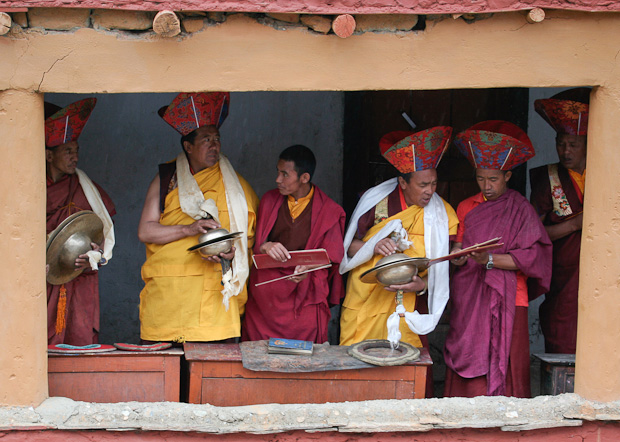
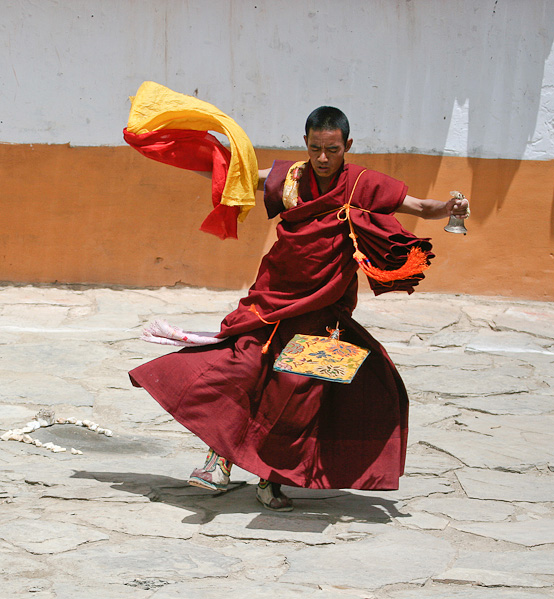
cham dance performance
On the second day, the celebration began by bringing in a few animals to the monastery. The pack included two horses and several goats, later joined by a well fed yak that instantly gained my respect, thanks to its size. It was time to worship these animals that had worked hard through the year to help the Ladahis make their living. The animals were cheered by changspa men as well as the lamas. Lamas applied butter on their forehead and threw a maroon paste on their body. This is a land where perhaps everything is sacred, not just animals but even beer. So it was time to shake a beer bottle and sprinkle on the animals. Shaken by the cold and scared by the noise, the horses got jumpy and the goats were shivering. The horses tried to run and then started fighting between each other, but the lamas quickly herded them out of the monastery and ended their agony. However, no one tried to mess up with the lone giant yak later; it had a size the automatically gets everyone’s obeisance.
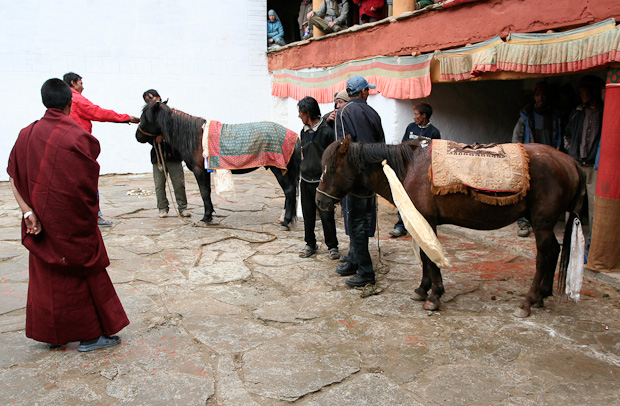
It was time for the cham-dances. The monks danced without the masks on the first day and repeated the performance wearing masks on day two. The masks came in various shapes – of demons, of strange creatures like cows with canines and of forms that can beat anyone’s imagination. The dances began slow and easy as the monks took deliberate steps circling around the flagpole at the center of the courtyard. The pace improved slowly with the progress in the dance and concluded with sudden and swift moves that were more suitable to the wild demon-like cover on their faces.
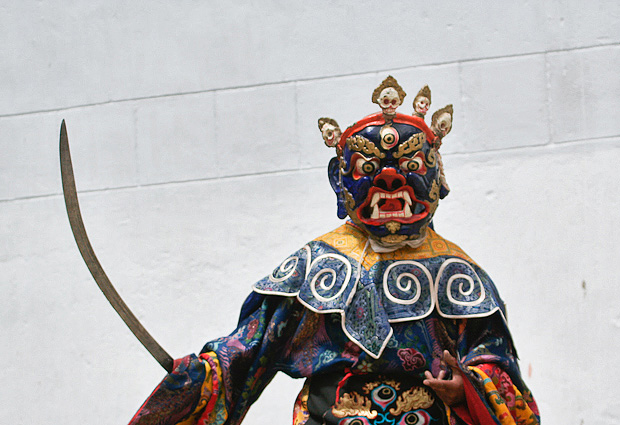

cham dance performance
While all this serious work with calculated beats and synchronized steps went on at the center of the courtyard, there was a masked man walking around with a whip scaring children and anyone who was likely to get scared. Some people laughed at him and pushed him away while he managed to push a few himself. He went to a corner full or tourists, showed the whip, shook his head and demanded them to part with money. A few obliged with small bills and others let out a nervous laughter. He tried the same with a Ladakhi girl later and got beaten up by her in response. These people of Ladakh never take anything seriously, not even the religious rituals. At the same time, Ladakhis are deeply religious and Buddhism defines a great deal of their everyday life.
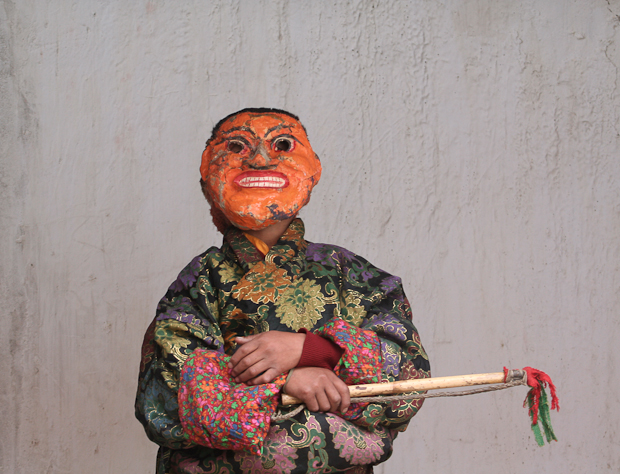
That evening, we were walking on the lake shore enjoying the quiet, cloudy evening, watching small waves hit the grassy shoreline. Tso Moriri’s shore is among the most beautiful places I have seen in Ladakh. To one side of me was a vast blue lake flanked by tall peaks with just a little bit of snow dotting their tips. On this side of the lake was a green stretch of grassland, a spectacle rarely seen in the barren landscape of Ladakh. The scale and grandeur of the lake and mountains seemed to have an ability calm the mind and instill peace, letting the million things that haunt in the head disappear for a moment.
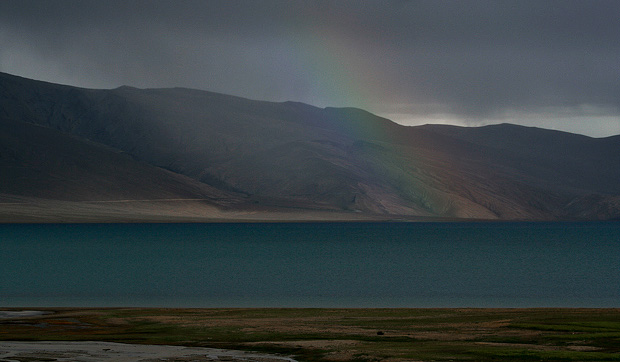
Tso Moriri Lake
As we walked slowly along the shore letting the cool breeze of the cloudy day caress us, I heard some voices coming from the village. A small procession had begun from the monastery, with a lama holding a fire leading the way and the entire village walking behind him. We joined them quickly as they gathered just outside the village. A mask—the kind that is used during the cham dances—was put on fire as the villagers stood in a circle and watched the smoke go up. It marked the end of the festival, symbolizing burning of all evil that had accumulated in the past one year.
Prints of all the images available. Request for prints.
